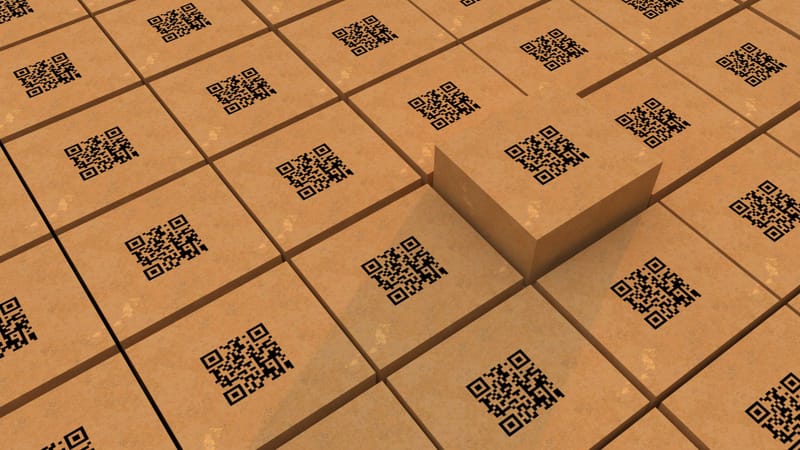Importance of Supply Chain Transparency: Leveraging Track and Trace Technology

Sustainability is becoming the buzzword in 2024. Consumers are more aware of what they want to purchase and want to know about the ethical processes they go through. And supply chain transparency has emerged as a critical factor in answering such questions.
Contents
At the heart of achieving transparency lies track-and-trace technology, which enables businesses to monitor and trace the movement of products throughout the supply chain. In this article, we delve into the significance of supply chain transparency and how track and trace technology plays a pivotal role in achieving it.
Understanding Track and Trace Technology
Track and trace technology refers to a set of tools and processes that enable the tracking and tracing of products from their point of origin to their final destination. It involves capturing data at various points along the supply chain and sharing this information in real time to provide visibility and accountability. Key components of track and trace systems include data capture and serialization, information sharing and visibility, and traceability and authentication features, which collectively facilitate end-to-end visibility and control over supply chain operations.
Benefits of Supply Chain Transparency
The adoption of track and trace technology offers numerous benefits to businesses, stakeholders, and consumers alike. Firstly, it enhances visibility and accountability by providing real-time insights into the movement and status of products across the supply chain. This enables businesses to identify bottlenecks, optimize processes, and respond promptly to disruptions, thereby improving efficiency and reducing costs. Moreover, track and trace technology mitigates risks and vulnerabilities such as counterfeiting, diversion, and theft by enabling the authentication and verification of products at every stage of the supply chain. By fostering transparency and trust, businesses can enhance their brand reputation and strengthen customer loyalty, ultimately driving long-term growth and sustainability.

Implementing Track and Trace Technology
Successfully implementing track and trace technology requires a strategic approach and collaboration across the supply chain ecosystem. This entails integrating track and trace solutions into existing supply chain infrastructure, such as warehouse management systems and enterprise resource planning software, to ensure seamless data exchange and interoperability. Additionally, businesses must collaborate closely with suppliers, manufacturers, distributors, and logistics partners to establish data-sharing protocols and standards. Compliance with regulatory requirements, such as serialization mandates and product labelling regulations, is also essential to ensure adherence to industry standards and best practices.
Is it possible to secure your product, supply chain and your online presence?
Challenges and Solutions in Supply Chain Transparency
Despite its numerous benefits, achieving supply chain transparency through track and trace technology comes with its own set of challenges. One such challenge is data standardization and interoperability, as different systems and stakeholders may use varying data formats and protocols. To address this, businesses can adopt industry standards and implement data governance frameworks to ensure consistency and compatibility across the supply chain. Additionally, cost and resource constraints may hinder the adoption of track and trace technology, especially for small and medium-sized enterprises. However, cloud-based solutions and software-as-a-service models offer cost-effective alternatives that enable businesses to deploy track-and-trace technology without significant upfront investments. Finally, addressing privacy and security concerns, such as data breaches and unauthorized access, requires robust cybersecurity measures and compliance with data protection regulations, such as GDPR and CCPA.
Future Trends in Track and Trace Technology
Looking ahead, the future of track and trace technology is characterized by advancements in IoT, blockchain, and artificial intelligence. These technologies offer new opportunities to enhance transparency, traceability, and predictive analytics capabilities across the supply chain. For example, the integration of IoT sensors and devices enables real-time monitoring of environmental conditions and product integrity, ensuring compliance with quality standards and regulatory requirements. Similarly, blockchain technology provides immutable and transparent records of product transactions, enabling secure and trusted exchanges of information among supply chain partners. Furthermore, the integration of artificial intelligence enables predictive analytics and optimization of supply chain processes, leading to greater efficiency, agility, and resilience.
Built in Trust
Supply chain transparency is paramount for building trust, ensuring compliance, and driving sustainable growth in today's global marketplace. By leveraging track and trace technology, businesses can achieve end-to-end visibility, mitigate risks, and enhance brand reputation, thereby gaining a competitive edge in an increasingly complex and interconnected supply chain landscape. As technology continues to evolve, embracing innovative solutions and best practices in supply chain transparency will be essential for navigating future challenges and opportunities.
Want to learn more about safeguarding your product and supply chain? Get in touch with us or book a demo today. Acviss has protected over 2 billion products globally and served 80+ brands scaling different industries and businesses. Join us to secure your standing in the market and amplify your brand and trust among your customers.
